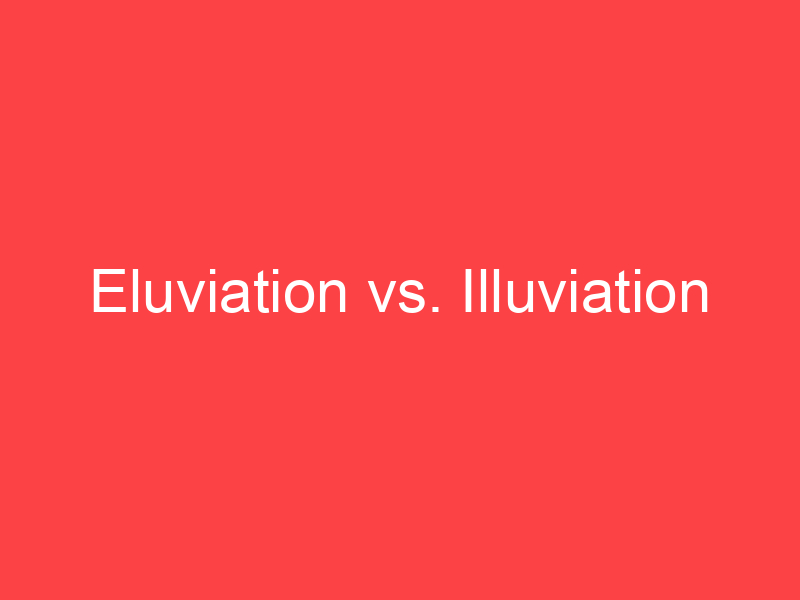-
Eluviation
In geology, eluvium or eluvial deposits are those geological deposits and soils that are derived by in situ weathering or weathering plus gravitational movement or accumulation.
The process of removal of materials from geological or soil horizons is called eluviation or leaching. There is a difference in the usage of this term in geology and soil science. In soil science, eluviation is the transport of soil material from upper layers of soil to lower levels by downward precipitation of water across soil horizons, and accumulation of this material (illuvial deposit) in lower levels is called illuviation. In geology, the removed material is irrelevant, and the deposit (eluvial deposit) is the remaining material. Eluviation occurs when precipitation exceeds evaporation.
A soil horizon formed due to eluviation is an eluvial zone or eluvial horizon. In a typical soil profile, the eluvial horizon refers to a light-colored zone located (depending on context and literature) either at the lower part of the A horizon (symbol: Ae) or within a distinct horizon (E horizon) below the A, where the process is most intense and rapid. Yet some sources consider the eluvial zone to be the A horizon plus the (distinct) E horizon, as eluviation technically occurs in both.
The strict eluvial horizon (E horizon) is typically light gray, clay-depleted, contains little organic matter and has a high concentration of silt and sand particles composed of quartz and other resistant minerals.
Eluvial ore deposits are those such as tungsten and gold placer deposits formed by settling and enriched by the winnowing or removal of lower density materials. Diamonds within yellow ground (weathered portions of kimberlites) may be considered to be eluvial deposits. Cassiterite and columbite-tantalite deposits also occur as residual or eluvial concentrations. The Pitinga tin deposit in Brazil, an eluvial deposit, is one of the largest tin mines in the world. Weathering supergene enrichment of an apatite rich carbonatite in Ontario has produced a significant eluvial phosphate ore deposit.
-
Illuviation
Illuvium is material displaced across a soil profile, from one layer to another one, by the action of rainwater. The removal of material from a soil layer is called eluviation. The transport of the material may be either mechanical or chemical. The process of deposition of illuvium is termed illuviation. It is a water-assisted transport in a basically vertical direction, as compared to alluviation, the horizontal running water transfer. The resulting deposits are called illuvial deposits. Cutans are a type of illuvial deposit.Illuvium includes organic matter, silicate clay, and hydrous oxides of iron and aluminum.
Illuvial deposits of clays, oxides, and organics accumulate in subsoil as distinctive soil horizons classified as “B horizons” or “zones of illuviation”.
-
Eluviation (noun)
The sideways or downward movement of dissolved or suspended material within soil caused by rainfall
-
Eluviation (noun)
Creation of geological deposits (eluvial deposits) by in situ weathering or weathering plus gravitational movement or accumulation.
-
Illuviation (noun)
The accumulation of suspended material and soluble compounds leached from an overlying stratum

